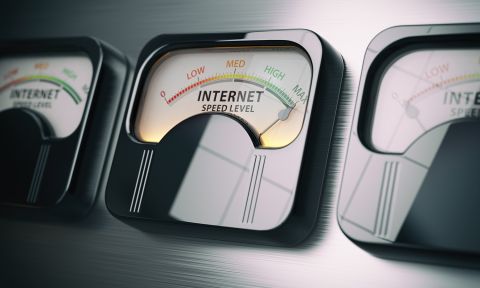It might be challenging to choose a new internet package with fast internet speed. To minimize buffering and separate Zoom meetings, you’ll want to ensure you have adequate internet bandwidth, but paying for the highest speed may be a waste of money.
Being a standard rule, you should have at least 10 megabits per second of download speed per person who might be online simultaneously. Still, the exact amount of internet speed you need depends on how many devices are connected to the internet and how you use it.
Click to find the Best internet providers in my area.
The following are the most important factors to consider while selecting an internet plan:
- Demands for bandwidth
- Typical internet connection speeds
- The upload and download speeds are compared.
- Types who use the internet
Continue reading to find out more about internet speed and how much you should be paying for it. Check out our list of recommended internet service providers (ISPs) if you’re seeking a new ISP that can offer you higher internet speeds.
What portions should I think about while selecting an internet speed?
This will need some (simple) arithmetic. But don’t worry—you’ll only have to do this once to figure out how much internet speed you need.
You’ll need to calculate the number of devices that will be online simultaneously, as well as the amount of bandwidth needed to keep each connection going smoothly.
- Surfing the internet 3–5 megabits per second
- Email 1–2 megabits per second
- Streaming music 1–2 megabits per second
- Looking at social media, 3–10 megabits per second
- Streaming video 5–25 megabits per second
- Conferencing via video 5–10 megabits per second
- Gaming on the internet 5–25 megabits per second
- Devices for the smart home 1 to 10 megabits per second
Typical internet speeds
Even while each internet provider has its unique set of plans, there are a few typical speed ranges you’ll come across when shopping.
25 Mbps—Enough for up to 5 devices and 2 people, depending on what you do with them. If there are no other internet connections, you may stream one program in 4K with 25 Mbps.
50 Mbps—Enough for two to four individuals and five to seven devices. A 50 Mbps connection can accommodate two to three video streams as well as some other online activities.
100 Mbps—Enough for up to 10 devices and 4–6 people. A 100 Mbps internet connection would be enough for most households.
200–500 Mbps—Perfect for prominent families that have many connected devices and wish to watch various movies or shows simultaneously.
1,000 Mbps—This is the fastest home internet speed available, and it’s ideal if you need lightning-fast internet for online gaming, your work, or just because you want the best of the best.
The upload and download speeds
We’ve spent most of this post discussing download speeds, which influence how quickly you can get data from the internet. Upload speed, or how quickly you can transfer data to the internet, is also significant.
Many internet companies promote download speeds but hide upload rates, which might be much slower than download speeds. That’s OK for most people since they don’t generally transmit as much information to the internet as they get.
However, if you upload a lot of data, images, or YouTube videos for business, or if you have numerous video chats going on simultaneously, be sure your upload bandwidth can keep up.
Internet service providers often provide you with 10% of your download speed as upload speed. If your internet package specifies 100 megabits per second, your upload speed will be 10 megabits per second.
Fiber broadband, which is more liberal with upload capacity than other forms of internet, is frequently an exception to these varying speeds. With a fiber internet connection, upload and download speeds are generally the same.
What effect does the kind of internet have on speed?
Different kinds of internet connections may slow you down in various ways, including speed and distance restrictions, network congestion, and excessive latency. Let’s look at the different kinds of internet and how they affect speed:
Fiber internet: The fastest form of internet presently accessible is fiber internet. Fiber internet connections, in particular, provide much quicker upload rates than other forms of internet. Google Fiber, Verizon Fios, and CenturyLink Fiber are examples of fiber internet providers.
Cable internet: cable internet is also a fast connection option with peak speeds of up to 1,000 Mbps. It lacks symmetric upload rates, and cable connections might stutter when many individuals in a neighborhood are connected at the same time. Xfinity, Spectrum, and Cox are a few prominent cable companies.
DSL: the internet has peak speeds of roughly 100 Mbps, but it frequently runs slower since the cables transporting your data are older and more susceptible to interference over long distances. CenturyLink and Frontier are two examples of DSL internet providers.
Satellite internet: due to its significant latency, satellite internet is frequently the slowest kind of internet. Consider this: all of the data you transmit and receive must go to and from space. HughesNet and ViaSat are two satellite internet providers (and soon to be Starlink).
Click here for Home Page


